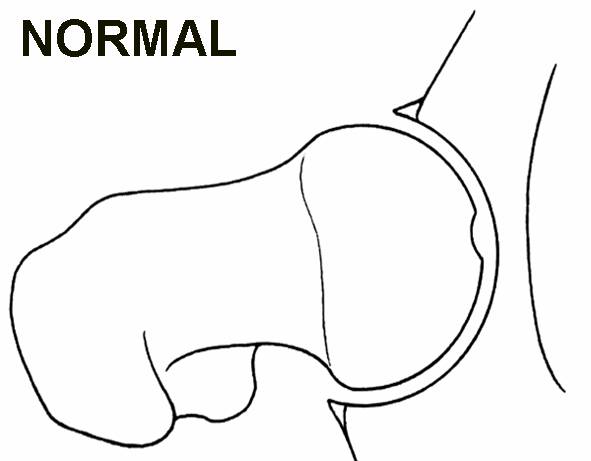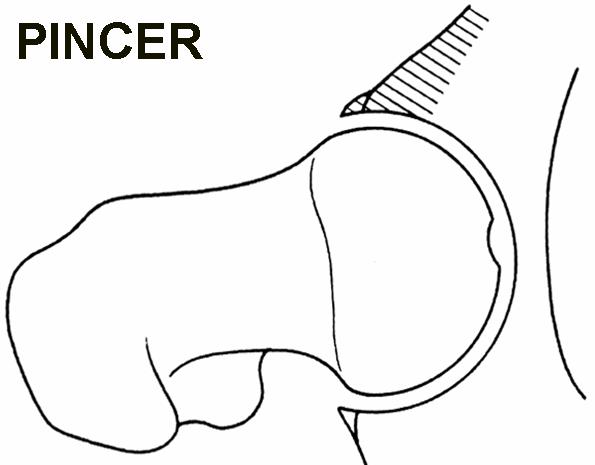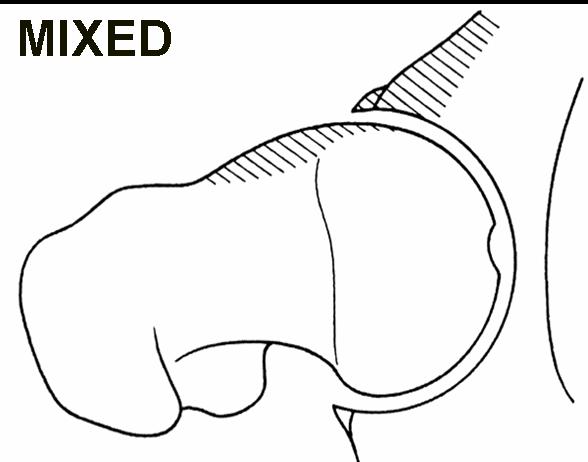Femoro-acetabular impingementResearch over the last 10 years has suggested that small abnormalities in the shape of both the femoral head and the acetabulum can result in damage to the articular cartilage to the hip and the labrum. This has been called hip impingement or femoro-acetabular impingement(FAI) and there are two main forms. The first is CAM type impingement where there is an abnormality at the junction between the femoral head and neck such that this area is no longer concave (dished or sculpted). When the hip flexes the hip acts as a cam and tries to force the abnormal area into the socket damaging the cartilage and the labrum. The second type of impingement is called PINCER impingement. In this type the abnormality is in the socket which may be too deep, or angled backwards(retroverted) rather than forwards(anteverted). Again, when the hip flexes damage to the labrum occurs as it hits against the femoral neck. Recent work has suggested that cam and pincer impingement often occur together.
Symptoms of impingement are groin or hip pain that occurs on flexion or flexion and rotation. Tears in the labrum can result leading to clicking or catching type symptoms. Surgically treating these abnormalities alleviates the symptoms and may perhaps stave off the development of osteoarthritis.
 
 
open surgery for FAI case example
|